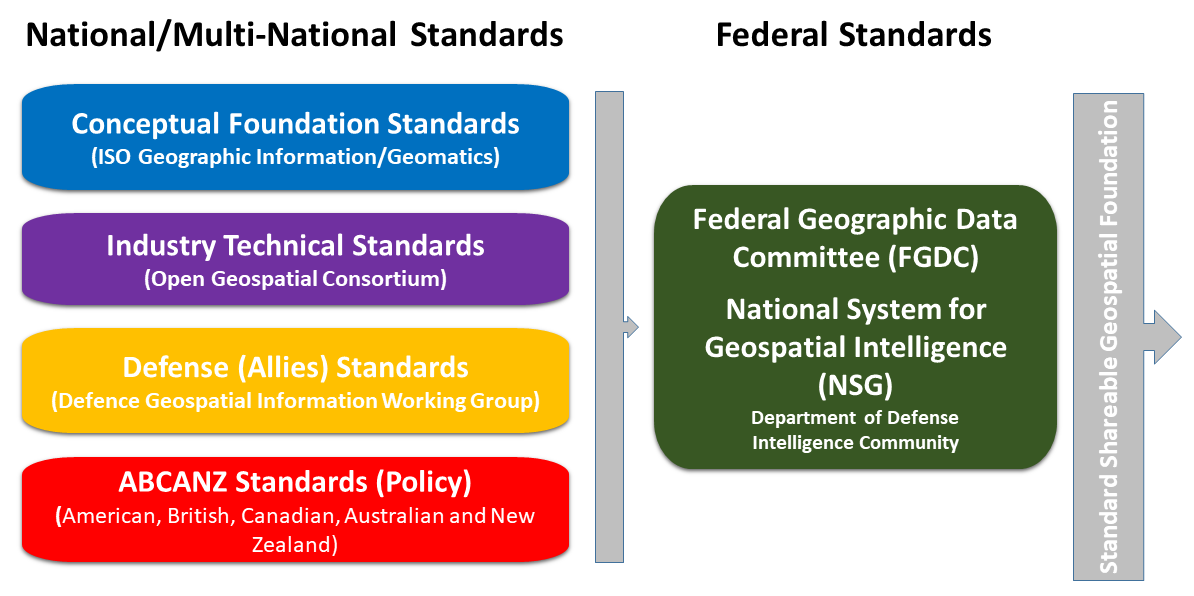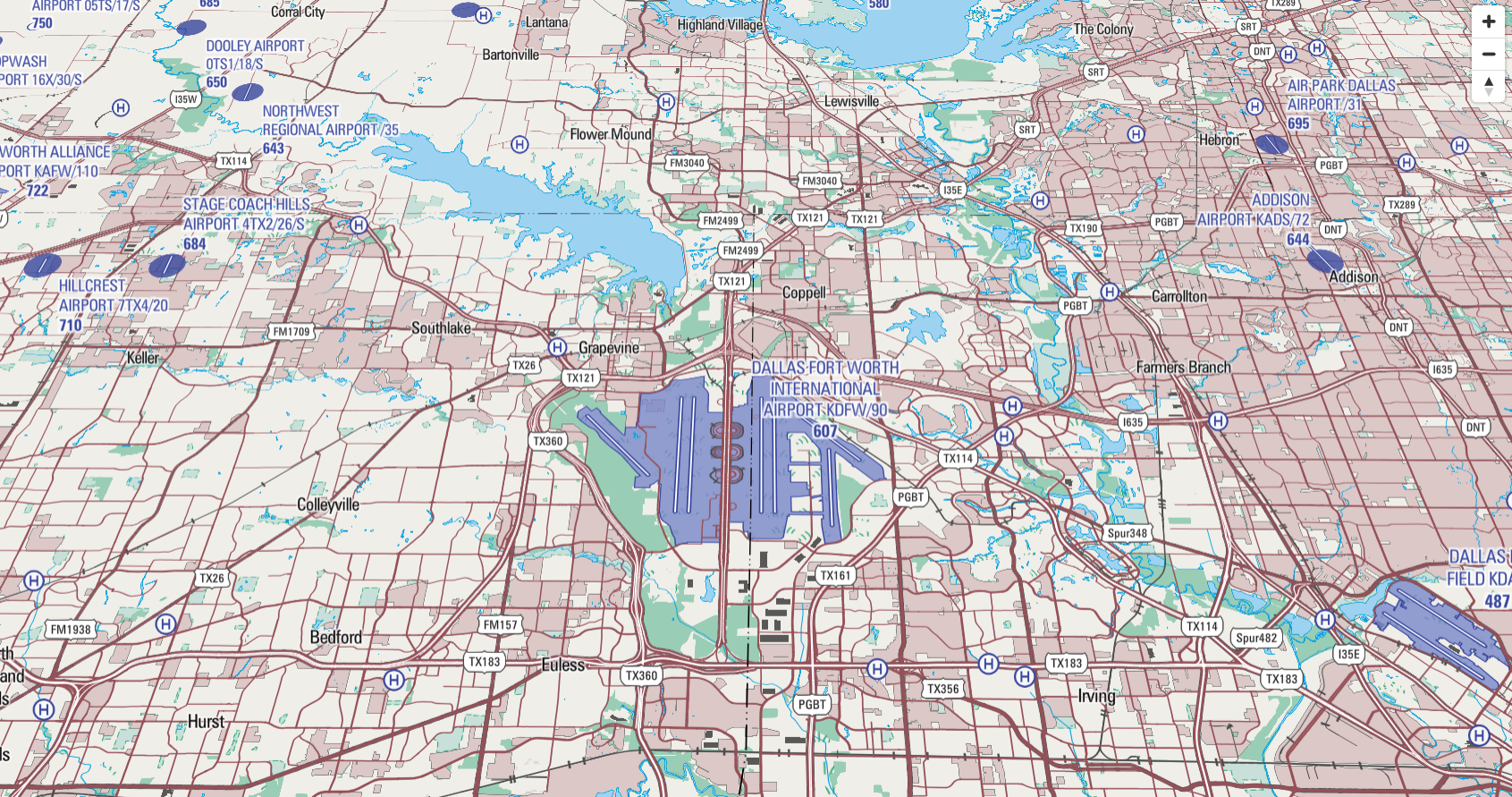Today's Standards
The Army requires a consistent understanding of the terrain to support military operations. Standards enable sharing of interoperable terrain data by defining a common language for data exchanges between systems designed independently of each other. This is why standards form the foundation for certifying that Army systems meet the Army’s geospatial interoperability requirements.
Building on standards from International standards organizations, industry technical standards, and American, British, Canadian, Australian and New Zealand (ABCANZ) Policy Standards, the Army partners with the National Geospatial-Intelligence Agency (NGA) to develop National System for Geospatial Intelligence (NSG) - approved geospatial standards to ensure interoperability with the Army Geospatial Enterprise.
Use of common standards across Army systems helps to ensure interoperability and enables a Common Operational Picture.
 |
|
The Army Geospatial Enterprise works closely with major standards organizations to meet the Army’s geospatial interoperability requirements.
|
Standard Sharable Geospatial Foundation standards are rapidly evolving and will change over time as the use of open Application Programmer Interfaces (APIs) and encodings increase.
Six Emerging Standards
To support future challenges, the Army Geospatial Enterprise is adopting open standards and an open systems approach. This approach uses modular design and system interfaces implemented using open standards that can be verified for conformance.
 |
| Releasable Basemap Tile image of the Dallas-Fort Worth International Airport in the topographic style. |
As part of Army modernization, the Army Geospatial Enterprise not only uses existing standards, but actively shapes the future by participating with the Open Geospatial Consortium (OGC) and the National Geospatial-Intelligence Agency (NGA) in developing new standards, including ...
- Route Exchange Model (REM) and Routing API (RAPI). The purpose of REM and RAPI is to help systems, including the Army's, access and share routes and obstacles in a simple, interoperable way - both online and offline. Together, REM and RAPI will allow applications to request and share routes from different providers, data sets, routing engines and algorithms. REM and RAPI are emerging National System for Geospatial-Intelligence (NSG) Standardization Implementation Guidance (SIG) standards and are advancing as an OGC Candidate Standard.
- 3D GeoVolumes API. The 3D GeoVolumes API provides the National System for Geospatial-Intelligence (NSG) with an API and encoding to request 3D content from different providers in a simple, interoperable way. The 3D GeoVolumes API is based on open standards and collaborative prototyping with the OGC, Testing has shown that it can be rapidly implemented in geospatial applications. This API will simplify systems development across geospatial enterprises by providing a single interface for requesting and receiving 3D content. The 3D GeoVolumes API is also advancing as an OGC Candidate Standard.
- Next Generation Web Services. The Next Generation Web Services initiative tracks the evolution of OGC APIs to overcome the limitations of existing services and focus on modern and emerging standards such as OGC API – Features, OGC API – Tiles, OGC Tile Set Metadata, and others.
- Portrayal. Portrayal refers to the visualization of geospatial data. Elements include the specification of map symbols, rules for how to display map symbols, guidelines for displaying text, and open standards for interoperability such as OGC API – Styles, OGC Points of Interest (draft), and the OGC Symbology Conceptual Model: Core Part.
- Vector Tiles. Vector tiles encode vector data, such as points, lines, and polygons, in roughly square, compact packages. They are emerging as an alternative to the raster tiles found in many web maps. Vector tiles typically are smaller in file size than existing map formats, so they require less storage and can be rendered more quickly. In addition, they can be “styled” by the user when they are displayed.
- Releasable Basemaps. Releasable Basemaps are generated from open data sources and are not Limited Distribution (non-LIMDIS). Consistent with National System for Geospatial-Intelligence (NSG) profiles, standards and guidance, Releasable Basemaps support US Army modernization and can be shared with allies and coalition partners.
UPDATE! The Releasable Basemap Tiles prototype is now available. There is also a video tutorial that explains how the Map Viewer works.